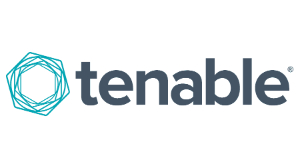
Quick Enquiry
Wi-Fi solutions refer to technologies and services that provide wireless network connectivity, enabling devices to access the internet and communicate with each other without the need for physical cables. Wi-Fi has become an integral part of modern connectivity, serving a wide range of environments from homes and businesses to public spaces. Here are key components and features of Wi-Fi solutions:
- Access Points (APs): Access points are devices that create wireless network coverage. They connect to wired networks and transmit Wi-Fi signals to devices within range.
- Wireless Network Standards: Wi-Fi standards, such as 802.11ac (Wi-Fi 5) and 802.11ax (Wi-Fi 6), determine data transfer rates, range, and capabilities.
- SSID and Network Segmentation: Service Set Identifiers (SSIDs) are unique names that identify Wi-Fi networks. Network segmentation involves creating multiple SSIDs to separate different user groups or purposes.
- Wireless Controllers: Wireless controllers manage and coordinate multiple access points in a network. They provide centralized management and configuration.
- Mesh Networking: Mesh Wi-Fi systems use multiple access points to create a seamless network with broader coverage and consistent performance in larger areas.
- Guest Wi-Fi: Provides a separate network for guest users while keeping them isolated from the internal network.
- Security Features:
- WPA3 Encryption: The latest encryption standard for securing Wi-Fi communications.
- WPA2 Enterprise: Provides more advanced security through individual user authentication.
- Network Segmentation: Separates devices into isolated segments to prevent unauthorized access.
- Quality of Service (QoS): QoS settings prioritize network traffic to ensure critical applications receive sufficient bandwidth.
- Roaming: Devices can seamlessly switch between access points as users move within the coverage area.
- Captive Portals: Captive portals require users to authenticate before accessing the Wi-Fi network. Common in public spaces like hotels and airports.
- Location-Based Services: Wi-Fi networks can be used to track and locate devices within a defined area for analytics, asset tracking, and more.
- Network Monitoring and Analytics: Tools for monitoring network performance, analyzing usage patterns, and identifying potential issues.
- Integration with Network Security: Wi-Fi solutions integrate with firewalls, intrusion detection systems, and other security measures to protect the network.
- Remote Management: Some solutions offer cloud-based management platforms, allowing administrators to manage Wi-Fi networks remotely.
- Multi-Band Support: Dual-band and tri-band routers offer multiple frequency bands (2.4 GHz and 5 GHz) to reduce congestion and improve performance.
- IoT Connectivity: Wi-Fi is used for connecting Internet of Things (IoT) devices to the network.
- Scalability: Wi-Fi solutions should be scalable to accommodate growing numbers of connected devices.
Wi-Fi solutions are essential for providing reliable and high-speed wireless connectivity in various environments. Whether it’s a home network, an office environment, a retail store, or a public venue, choosing the right Wi-Fi solution involves considering factors like coverage area, user density, security requirements, and potential future growth
Our Proud Partners




































